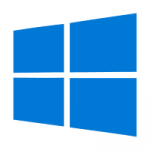 This month’s pile from Microsoft includes fixes for vulnerabilities in Internet Explorer (9 and 11), both variants of Edge (Chromium and EdgeHTML), Office (2010, 2013, 2016, and 2019), SharePoint, Visual Studio, Windows (7, 8.1, and 10), and Windows Server (2008, 2012, 2016, 2019).
This month’s pile from Microsoft includes fixes for vulnerabilities in Internet Explorer (9 and 11), both variants of Edge (Chromium and EdgeHTML), Office (2010, 2013, 2016, and 2019), SharePoint, Visual Studio, Windows (7, 8.1, and 10), and Windows Server (2008, 2012, 2016, 2019).
There are fifty-three security bulletins in all, and fifty-three associated updates. The updates includes fixes for one hundred and twenty vulnerabilities, twenty-one of which have been flagged as having critical severity. All of the critical vulnerabilities involve potential remote code execution.
As usual, the details are available in Microsoft’s Security Update Guide.
You can still get the Windows 7 updates legitimately, but only if you subscribe to Microsoft’s rather expensive Extended Security Updates program.
Windows 10 systems will update themselves automatically, although with newer versions, you have some control over when that happens. With Windows 10, most updates are going to get installed at some point. But delaying them can allow you to avoid updates that cause problems, since Microsoft usually issues fixes for the updates shortly after problems are discovered. But doing that potentially leaves your computer vulnerable in the interim. It’s your call. Adjust the update settings by going to Settings > Update & Security > Advanced options.
For Windows 8.1 users, it’s all about Windows Update. If you’ve configured it to install updates automatically, you’re basically in the same boat as Windows 10 users. Otherwise, locate Windows Update in the Control Panel, and click the Check for updates button.
 boot13
boot13 If you’re old enough to remember the
If you’re old enough to remember the  With Windows 10, Microsoft shifted a lot of their testing to users, through the
With Windows 10, Microsoft shifted a lot of their testing to users, through the  Adobe once again tags along this month, with new versions of Reader and Acrobat. Most people use the free version of Reader, officially known as Acrobat Reader DC. The new version,
Adobe once again tags along this month, with new versions of Reader and Acrobat. Most people use the free version of Reader, officially known as Acrobat Reader DC. The new version,  Happy Patch Tuesday! Today’s gifts from the always-generous folks at Microsoft include forty-two updates, addressing one hundred and fifteen security bugs in Internet Explorer (9 and 11), Edge (the original version, not the one built on Chromium), Office (2010, 2016, and 2019), Windows (7, 8.1, and 10), and Windows Server.
Happy Patch Tuesday! Today’s gifts from the always-generous folks at Microsoft include forty-two updates, addressing one hundred and fifteen security bugs in Internet Explorer (9 and 11), Edge (the original version, not the one built on Chromium), Office (2010, 2016, and 2019), Windows (7, 8.1, and 10), and Windows Server.